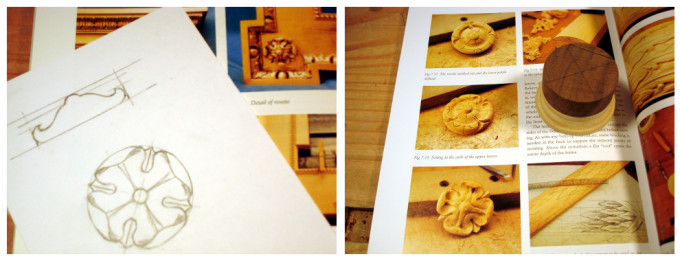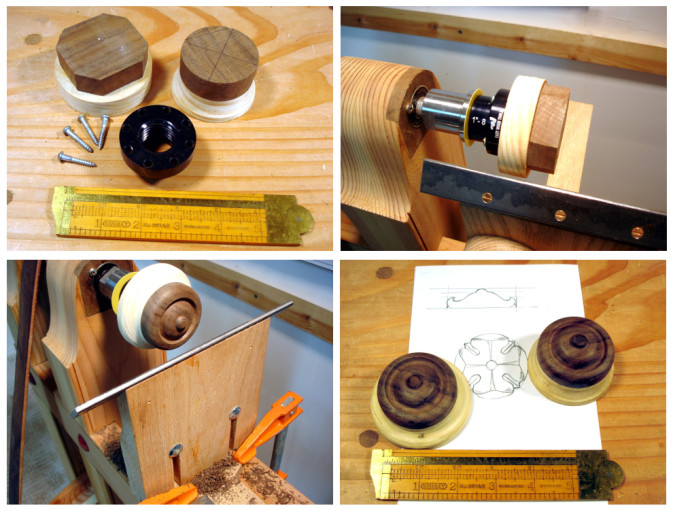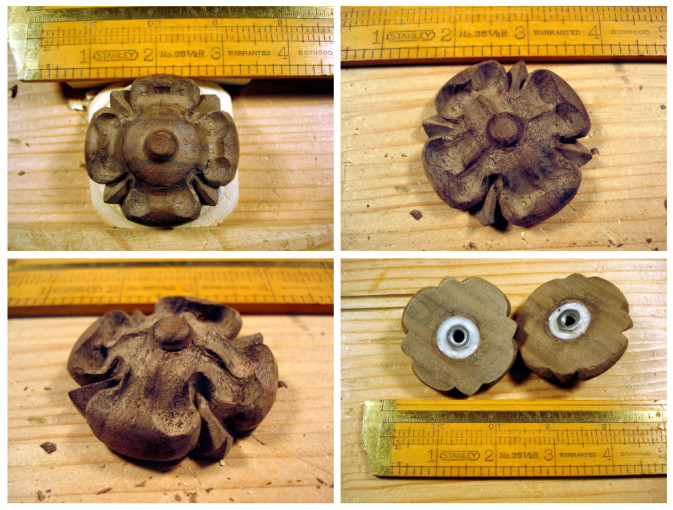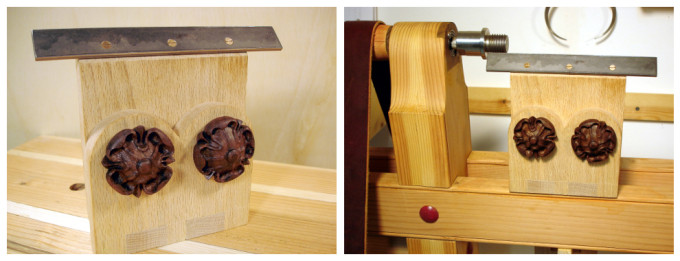Sometimes, there’s madness in my method. Back when I made the adjustable tool rest, I used a certain shape in anticipation of these carvings.
 Inspiration for this pair of turnings comes from yet another Frederick Wilbur book, “Carving Architectural Details in Wood: The Classical Tradition.” A little rosette appears in the lower corners of a very ornate picture frame. It’s a classic rosette that’s frequently seen on period furnishings. Besides its appeal to me, it is sometimes carved from a turned base, one of the reasons I built a lathe.
Inspiration for this pair of turnings comes from yet another Frederick Wilbur book, “Carving Architectural Details in Wood: The Classical Tradition.” A little rosette appears in the lower corners of a very ornate picture frame. It’s a classic rosette that’s frequently seen on period furnishings. Besides its appeal to me, it is sometimes carved from a turned base, one of the reasons I built a lathe.
As with many carvings, I like to draw the item a couple of times myself. It helps be get a better feel for the object, for knowing the turning profile, and for having a fair idea of how to create the result.
The turnings are of walnut. Because the dominant features are on the face, these need to be mounted for faceplate turning. I used a small “Easy Wood Tools” faceplate, to which I screwed some sacrificial pine. To that, the walnut is attached by the technique of gluing a layer of paper between the pine and walnut.
The turning is straightforward. Walnut works very easily. The only unusual aspect is that I have not yet made a tool rest specifically for faceplate turning. So, I improvised by F-clamping the existing tool rest across the lathe’s ways in the only way it would fit … backwards.
At my level of ability, carving is about two factors, grain and sequence. Feeling grain interaction with tools is almost second nature now. The real consideration for grain on these pieces was orientation with respect to features. I decided to place the leaves between the pedals on diagonals to the grain direction. My hope was in minimizing the likelihood of breakage. That worked out great. Sequence is the other aspect that I find challenging. What to cut first? My instinct was to set in the spaces between pedals first, and to do that with cuts that minimize the pressure on what will be the sharp ridge of the leaves. That worked out OK. The rest of the carving was to remove everything else that’s neither leaf nor pedal. 🙂
Lastly, I drilled the back of each rosette with a 3/4″ hole the depth of a metal nut, and additional 1/4″ hole to accommodate a screw. The nut is set in a pool of epoxy. The whiteness of the epoxy is due to a filler.
Finish: simple boiled linseed oil. NO sanding harmed either this carving or me!
The result is… some classy knobs to replace the ugly wing nuts on the adjustable tool rest!




Leave a Reply